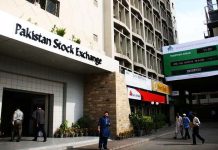DM Monitoring
WASHINGTON: U.S. consumer sentiment fell unexpectedly in early November as households worried about their finances, the resurgent COVID-19 pandemic and the depleted fiscal stimulus, dimming the economy’s outlook as the curtain started to close on a challenging year.
The survey from the University of Michigan on Friday also showed Democrat Joe Biden’s victory in the Nov. 3 presidential election was weighing on expectations among Republicans, with a slight gain among Democrats.
Daily new coronavirus cases have been exceeding 100,000, with hospitalizations and deaths surging, prompting some state and local governments to impose new restrictions on businesses. Restrictions and consumer avoidance of crowded places could trigger another wave of layoffs and further squeeze incomes following the loss of a government weekly unemployment subsidy.
“The drawdown in sentiment seems to reflect decreased perceptions of household finances, which may be a lagged effect of the dwindling fiscal stimulus,” said Tim Quinlan, a senior economist at Wells Fargo Securities in Charlotte, North Carolina. “More consumers reported lower income than higher income for the first time since 2014.”
The University of Michigan’s consumer sentiment index dropped to 77 early this month from a final reading of 81.8 in October. Economists polled by Reuters had forecast the index little changed at 82. The survey’s measure of current conditions was steady. Its gauge of expectations fell to 71.3 from 79.2.
A measure of expectations among Republicans declined to 76.4 from 96.4. It edged up to 69.3 from 68.6 among Democrats.
A weekly unemployment supplement, which was part of more than $3 trillion in government coronavirus relief, has lapsed for millions of unemployed and underemployed workers. A second rescue package is unlikely before President-elect Biden takes office in January.
Economists expect consumer sentiment will trend lower despite promising developments on experimental vaccines.
“With more and more states starting to impose new restrictions on activity, this highlights the growing downside risks posed by the pandemic for the next few months,” said Andrew Hunter, a senior economist at Capital Economics.
Stocks on Wall Street rose on upbeat results from Walt Disney Co DIS.N and Cisco Systems Inc CSCO.O. The dollar .DXY dipped against a basket of currencies. U.S. Treasury prices fell.
VEGETABLE PRICES ROCKETING
Exploding COVID-19 infections and labor market slack are seen keeping a lid on inflation, even as producer prices maintain their steady rise. In a separate report, the Labor Department said its producer price index for final demand climbed 0.3% in October, driven by more expensive food and gasoline, after rising 0.4% in September.
It was the sixth straight monthly increase in the PPI. A 0.5% increase in the price of goods accounted for nearly 60% of the gain in the PPI. Goods rose 0.4% in September.
In the 12 months through October, the PPI advanced 0.5% after rebounding 0.4% in September.
Economists had forecast the PPI would rise 0.2% in October and increase 0.4% on a year-on-year basis.
Excluding the volatile food, energy and trade services components, producer prices gained 0.2% in October. The so-called core PPI advanced 0.4% in September. In the 12 months through October, the core PPI increased 0.8% after rising 0.7% in September.






